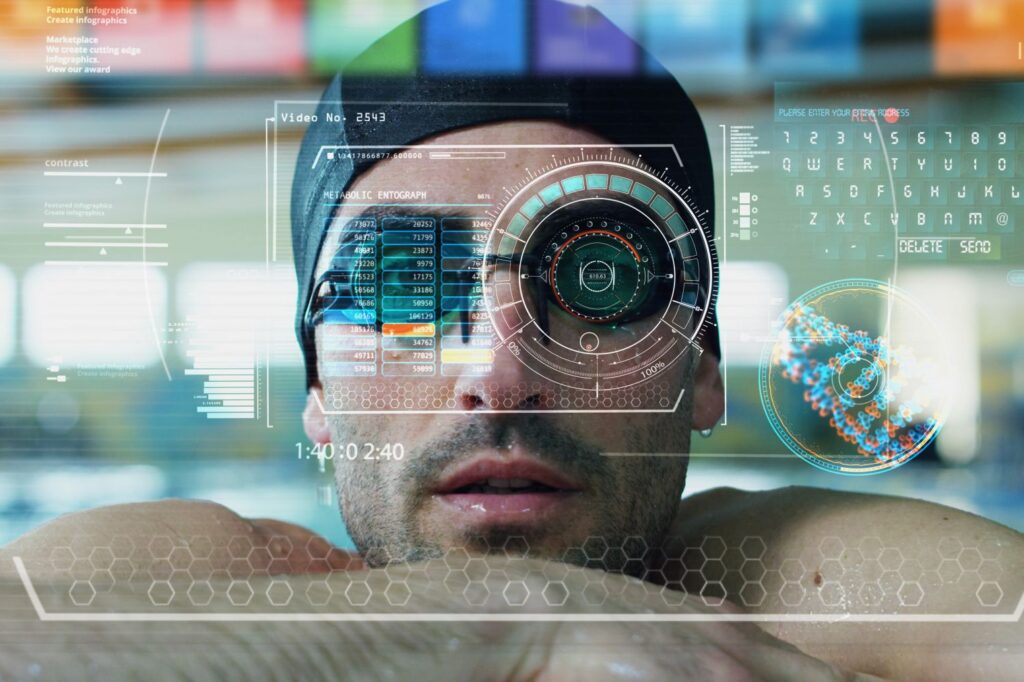
We treat athletes as if they are real-life superheroes that overcome physical challenges to achieve greatness in their respective sports. Today’s athletes are physically faster, stronger and more agile than the generation before, but something is wrong. Some recent news includes the NBA expanding its mental health programme for its players and the NFL changing its rules and procedures to better protect its stars from concussions.
The focus of any individual or team sport is to maximise player performance. In our sports culture, we are obsessed with team and player statistics using traditional measures in each sport. Player performance directly translates to increased probability of winning in individual sports. Team sports have added complexity based on interactions of multiple players in a team.
Player performance measures are usually categorised into two areas, which are physical and mental skills. Each sport measures the impact of a blend of physical and mental skills in ways that are specific to that sport, per category and position. Examples include: basketball (field goals made, field goals attempted, free throw percentage), American football (passing yards, point after touchdown, completion percentage), and soccer (shots on goal, assists, yellow cards).
Understanding the ways in which a player processes information is very helpful in terms of coaching, motivating and designing the types of practices that will be most effective in developing the athlete as an individual and as part of the team. What truly becomes interesting is the intersection of this subjective data with the objective data related to the way the athlete’s brain actually functions, which includes measurements related to mental skills.
We have an opportunity to bring a whole new breadth to the path of maximised performance. Additionally, when applied in a team dynamic or game situation, the opportunities for making sense of these interactions and how to best use it on a timely basis is a key means for success at all levels of the game.
Mental health
Any top-tier professional athlete will tell you that the game is much more of a mental challenge than physical. Mental preparation is what separates good athletes from elite athletes. There is a darker side that we haven’t traditionally spoken about but now is increasingly in the news. Every day we hear about the mental health crisis that are affecting professional athletes that includes mental disorders such as depression, anxiety, and bi-polar illness.
The area of mental health in sports have been opaque and stigmatised due to lack of understanding. EEG, which is electrical activity of the brain collected via non-invasive means, provides a multi-channel, high-frequency, low-latency, time-series data set for an athlete. While brain research is ever-evolving, comparative baselines of EEG measurements have provided utility in diagnosing brain injury and recovery although acute vis-à-vis chronic brain injuries are still not well-understood. This area of EEG analysis is greatly uncharted but offers the next frontier in improving mental health of players due to its ease of deployment.

The Brain – Combining physical and mental understanding
In an effort to maximise performance while reducing player risk, we look to have a deeper understanding of the brain. The brain influences both the physical and mental skills and health of each player but remains largely unexplored in the Sports Enterprise. Artificial Intelligence (AI) offers a unique approach to understanding our own brains but is still a broad term that is a bit misunderstood, full of both promise and hype, fact and fiction. The simplest definition of AI refers to software systems that behave with intelligence without being explicitly programmed. These systems learn to identify and classify input patterns, make and act on probabilistic predictions and operate without explicit rules or supervision.
Deep learning is where we are seeing the biggest breakthroughs in the field. Deep learning detects patterns by using artificial neural networks. These artificial neural networks are modeled after the most elegant neural network, our brain, and contain multiple layers to enable automatic feature extraction from the data – something that was impossible with machine learning – with each successive layer, using the output from the previous layer as input. Because of its architecture, deep learning excels at dealing with high degrees of complexity, forms and volumes of data. It can understand, learn, predict and adapt, autonomously improving itself over time.
For most of the last 100 years, brain exploration has been dominated by research which have derived broadly accepted measures such as P300 amplitude. Only recently, accessibility of high-quality EEG data combined with GPU-accelerated computation and advanced deep learning approaches has allowed us to move beyond hand-crafted EEG features. Within the sports enterprise, understanding of the players’ brain needs to be combined with the objectives of the organisation to provide the right context and control. In the context of professional sports, these objectives loosely translates to improving player performance and wellness, leading to enhanced fan experience, increased revenues, and a winning culture.
How AI and Deep Learning changes the game
AI and Deep Learning can identify latent patterns, known as biomarkers, in EEG that change over time, and are associated with player performance and wellness. These biomarkers can be used to measure and achieve the personalised objectives of each player and team. By combining high quality data from different modalities (e.g. EEG, sleep, heart rate variability, performance statistics) and forming a player performance and wellness profile, we can identify these biomarkers and better understand causal relationships between the physical and mental aspects of sports.
Pervasive Data Intelligence enables the automation of biomarker discovery through representation learning, i.e. finding higher order feature spaces that relate to specific phenomenon. By applying Pervasive Data Intelligence, a sports team doctor now has a path to utilise these biomarkers per player performance and wellness profile. AI and deep learning allow organisations to maximise player performance while minimising player risk through better insights from 100% of performance and wellness data, at a scale that only automation can deliver.

Atif Kureishy, Global VP, Emerging Practices, Teradata


